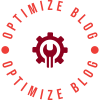In our increasingly industrialized world, chemical exposure has become a significant concern for both personal health and environmental safety. From household products to industrial chemicals, the potential for harmful exposure is omnipresent. Understanding how to protect yourself from chemical exposure is not just a matter of awareness; it requires a multifaceted approach that combines knowledge, preventive measures, and proactive strategies. This article delves into the complexities of chemical exposure and offers practical solutions to safeguard your health.
Understanding Chemical Exposure
Chemical exposure occurs when an individual comes into contact with harmful substances through inhalation, ingestion, or skin absorption. These chemicals can be found in various forms, including gases, liquids, and solids, and can originate from numerous sources such as:
- Household Products: Cleaning agents, pesticides, and personal care products often contain volatile organic compounds (VOCs) and other hazardous materials.
- Industrial Environments: Workers in manufacturing, construction, and agriculture may encounter toxic substances like heavy metals, solvents, and carcinogens.
- Environmental Sources: Air pollution, contaminated water supplies, and soil pollutants can also contribute to chemical exposure.
Identifying Risks
The first step in protecting yourself from chemical exposure is to identify potential risks in your environment. Conduct a thorough assessment of your surroundings, including:
- Home Environment: Review the safety data sheets (SDS) of cleaning products, paints, and other chemicals you use. Opt for products labeled as non-toxic or environmentally friendly.
- Workplace Safety: Familiarize yourself with the chemicals used in your workplace. Employers are required to provide training on handling hazardous materials and maintaining safety protocols.
- Community Awareness: Stay informed about local environmental issues, such as air and water quality reports, which can indicate potential exposure risks.
Practical Protective Measures
Once you have identified potential sources of chemical exposure, implementing protective measures is crucial. Here are several strategies to consider:
- Personal Protective Equipment (PPE)
In industrial settings, wearing appropriate PPE is essential. This may include:
- Respirators: Protect against inhalation of harmful vapors and dust.
- Gloves: Use chemical-resistant gloves when handling hazardous substances.
- Protective Clothing: Wear coveralls or aprons to minimize skin exposure.
- Ventilation and Air Quality Control
Ensure proper ventilation in your home and workplace to reduce indoor air pollution. Consider the following:
- Use Exhaust Fans: Install exhaust fans in kitchens and bathrooms to expel moisture and chemical fumes.
- Air Purifiers: Invest in high-efficiency particulate air (HEPA) filters to capture airborne pollutants.
- Safe Storage and Disposal
Properly storing and disposing of chemicals can significantly reduce exposure risks:
- Storage: Keep chemicals in their original containers with labels intact. Store them in a cool, dry place away from direct sunlight.
- Disposal: Follow local regulations for hazardous waste disposal. Never pour chemicals down the drain or throw them in regular trash.
- Educate Yourself and Others
Knowledge is power. Educate yourself and those around you about the dangers of chemical exposure:
- Training Programs: Participate in workplace safety training and encourage your employer to provide regular updates on chemical safety.
- Community Workshops: Attend local workshops on safe chemical handling and environmental health.
Monitoring and Reporting
Regular monitoring of your exposure levels can help you stay informed about potential risks. Consider the following:
- Health Screenings: Schedule regular health check-ups to monitor for any signs of chemical exposure.
- Report Concerns: If you suspect unsafe chemical practices in your workplace or community, report them to the appropriate authorities.
Conclusion
Protecting yourself from chemical exposure is a proactive endeavor that requires vigilance, education, and the implementation of effective strategies. By understanding the sources of chemical risks, utilizing protective measures, and fostering a culture of safety, you can significantly reduce your exposure and safeguard your health. Remember, the goal is not just to react to chemical hazards but to create a safer environment for yourself and future generations. Stay informed, stay safe, and take charge of your health in the face of chemical exposure risks.
About Author
You may also like
-
Comparing Materials: Glass, Metal, and Polymeric Facade Solar Panels
-
How to Choose High-Performance Engineering Plastics for Modern Industrial Applications
-
How to Use Plastic Additives to Improve Material Performance in Modern Manufacturing
-
Indoor vs. Outdoor EV Chargers: Choosing the Right 7kW Charging Solution for Your Home
-
Unlocking Smart Energy: Key Benefits of a 3 kW Hybrid Grid Solar Inverter
